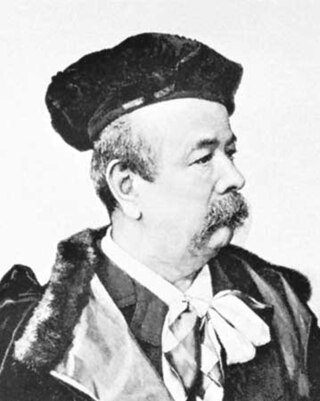
Charles Frederick Worth was an English fashion designer who founded the House of Worth, one of the foremost fashion houses of the 19th and early 20th centuries. He is considered by many fashion historians to be the father of haute couture. Worth is also credited with revolutionising the business of fashion.

Madeleine Vionnet was a French fashion designer. Vionnet trained in London before returning to France to establish her first fashion house in Paris in 1912. Although it was forced to close in 1914 at the outbreak of the First World War, it re-opened after the war and Vionnet became one of the leading designers of 1920s-30s Paris. Vionnet was forced to close her house in 1939 and retired in 1940.

Fashion in the 1890s in European and European-influenced countries is characterized by long elegant lines, tall collars, and the rise of sportswear. It was an era of great dress reforms led by the invention of the drop-frame safety bicycle, which allowed women the opportunity to ride bicycles more comfortably, and therefore, created the need for appropriate clothing.

Zachary E. Posen is an American fashion designer.

Callot Soeurs was one of the leading fashion design houses of the 1910s and 1920s.

Bonwit Teller & Co. was an American luxury department store in New York City, New York, founded by Paul Bonwit in 1895 at Sixth Avenue and 18th Street, and later a chain of department stores.
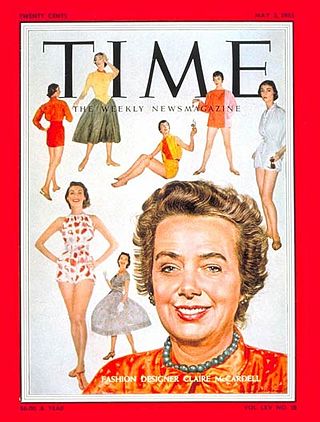
Claire McCardell was an American fashion designer of ready-to-wear clothing in the twentieth century. She is credited with the creation of American sportswear.

Norman David Levinson known professionally as Norman Norell, was an American fashion designer famed for his elegant gowns, suits, and tailored silhouettes. His designs for the Traina-Norell and Norell fashion houses became famous for their detailing, simple, timeless designs, and tailored construction. By the mid-twentieth century Norell dominated the American fashion industry and in 1968 he launched his own brand of perfume. The designer Gilbert Adrian was the first American designer to add a perfume line in 1945, with his "Saint" and "Sinner" fragrances.

The most characteristic North American fashion trend from the 1930s to 1945 was attention at the shoulder, with butterfly sleeves and banjo sleeves, and exaggerated shoulder pads for both men and women by the 1940s. The period also saw the first widespread use of man-made fibers, especially rayon for dresses and viscose for linings and lingerie, and synthetic nylon stockings. The zipper became widely used. These essentially U.S. developments were echoed, in varying degrees, in Britain and Europe. Suntans became fashionable in the early 1930s, along with travel to the resorts along the Mediterranean, in the Bahamas, and on the east coast of Florida where one can acquire a tan, leading to new categories of clothes: white dinner jackets for men and beach pajamas, halter tops, and bare midriffs for women.

Fashion in the period 1900–1909 in the Western world continued the severe, long and elegant lines of the late 1890s. Tall, stiff collars characterize the period, as do women's broad hats and full "Gibson Girl" hairstyles. A new, columnar silhouette introduced by the couturiers of Paris late in the decade signaled the approaching abandonment of the corset as an indispensable garment.

Valentina Nicholaevna Sanina Schlee, simply known as Valentina, was a Ukrainian émigrée fashion designer and theatrical costume designer active from 1928 to the late 1950s.
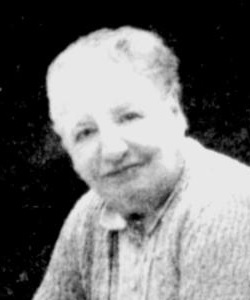
Jessie Franklin Turner was an American fashion designer based in New York in the early 20th century. She was notable for being one of the first American designers to create unique designs, rather than imitating or copying Paris fashions, and was the first American fashion designer to establish a long-term couture business in New York.

The William K. Vanderbilt House, also known as the Petit Chateau, was a Châteauesque mansion at 660 Fifth Avenue in Midtown Manhattan, New York City, on the northwest corner of Fifth Avenue and 52nd Street. It was across the street from the Triple Palace of William Henry Vanderbilt, which occupied the entire block between 51st and 52nd Streets on the west side of Fifth Avenue.
Adele Simpson was an American fashion designer with a successful career that spanned nearly five decades, as well as a child performer in vaudeville who danced in productions with Milton Berle and other entertainers.

Vionnet is an haute couture label founded by the French couturier Madeleine Vionnet. Established in 1912, the house of Vionnet closed doors in 1939. Vionnet was relaunched by Guy and Arnaud de Lummen in the mid-1990s with perfumes and accessories, and then in 2006 with ready-to-wear collections. In 2012, Vionnet was purchased by the Kazakh businesswoman Goga Ashkenazi. In 2023, Chimhaeres Investments purchased the brand.
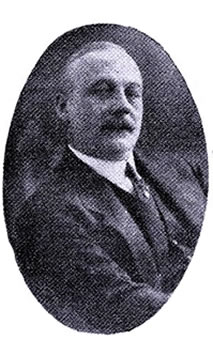
Georges Camille Doeuillet was born 16 July 1865 in Oise, Northern France. He became one of France's best known couturiers along with his peers Louise Chéruit, Jeanne Paquin, Paul Poiret, Redfern & Sons and the House of Charles Worth.
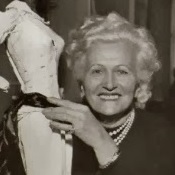
Marie-Louise Bruyère, mostly known as Madame Bruyère, or simply as Bruyère, was a French fashion designer of the 1930s, 1940s and 1950s, operating out of Paris, and importing her fashion lines abroad.
Philippe et Gaston was a Paris couture house established in 1922. It rapidly became a prestigious establishment. In 1926 it was ranked alongside Chanel, Madeleine Vionnet and Jeanne Lanvin as a notable French fashion house. By 1931, it was well known enough to rate a mention in Bruno Jasieński's 1931 play The Ball of the Mannequins. However, by 1946, the house was in need of resurrection. That year, the French textile baron, entrepreneur, and one of France's richest men, Marcel Boussac invited Christian Dior to become head designer for Philippe et Gaston and rejuvenate the brand. Dior declined, as he wanted to launch his own label under his own terms, rather than resurrect an "old-fashioned and rundown house." Boussac and Dior subsequently launched Christian Dior S. A.
Tina Leser was an American fashion designer. Part of a generation of pioneering sportswear designers, Leser was particularly known for her global influences.

House of Thurn was an haute couture label founded by Sidonie Thurn and continued by her daughter Carolyn Hague. The house, known by its label as Thurn, prepared made-to-order fashions for its wealthy customers. Begun as a small import shop in Brooklyn, Thurn occupied a succession of buildings on or near Fifth Avenue from 1870 to 1934. The last of these was a remodeled Gilded Age townhouse located between Madison and Fifth Avenues at 15 East 52nd Street. An article in Arts & Decoration magazine for July 1923 described this location as "a charming salon, all flattering French gray, with sparkling mirrors and gracious French furniture covered with satin damask of gray and gold." In 1926, a writer for The Nation listed Thurn as one of the sixteen most exclusive houses in New York. In 1937, the owner of one of the sixteen houses, said that Thurn had been "practically the highest class business establishment of the kind in New York City." Museum collections that hold Thurn fashions include the Metropolitan Museum of Art, The Los Angeles County Museum of Art, the Hillwood Museum, the Indianapolis Museum of Art, and the Fashion Institute of Design Museum, Los Angeles.



















